Contents
Guide
Published by Collins
An imprint of HarperCollinsPublishers
Westerhill Road, Bishopbriggs, Glasgow G64 2QT
www.harpercollins.co.uk
HarperCollinsPublishers
1st Floor, Watermarque Building, Ringsend Road, Dublin 4, Ireland
In association with
Royal Museums Greenwich, the group name for the National Maritime Museum,
Royal Observatory Greenwich, Queens House and Cutty Sark
www.rmg.co.uk
HarperCollins Publishers 2021
Text and illustrations Storm Dunlop and Wil Tirion
Photographs see acknowledgements .
Collins is a registered trademark of HarperCollins Publishers Ltd
All rights reserved under International and Pan-American Copyright Conventions. By payment of the required fees, you have been granted the non-exclusive, non-transferable right to access and read the text of this e-book on screen. No part of this text may be reproduced, transmitted, downloaded, decompiled, reverse engineered, or stored in or introduced into any information storage and retrieval system, in any form or by any means, whether electronic or mechanical, now known or hereinafter invented, without the express written permission of HarperCollins.
The contents of this publication are believed correct at the time of creation.
Nevertheless the publisher can accept no responsibility for errors or omissions, changes in the detail given or for any expense or loss thereby caused.
HarperCollins does not warrant that any website mentioned in this title will be provided uninterrupted, that any website will be error free, that defects will be corrected, or that the website or the server that makes it available are free of viruses or bugs. For full terms and conditions please refer to the site terms provided on the website.
A catalogue record for this book is available from the British Library
If you would like to comment on any aspect of this book, please contact us at the above address or online. e-mail:
 facebook.com/CollinsAstronomy
facebook.com/CollinsAstronomy
 @CollinsAstro
@CollinsAstro
eBook Edition May 2021
Source ISBN 9780008469863
E-Book ISBN 9780008491680
Version: 2021-07-27
This ebook contains the following accessibility features which, if supported by your device, can be accessed via your ereader/accessibility settings:
- Change of font size and line height
- Change of background and font colours
- Change of font
- Change justification
- Text to speech
- Page numbers taken from the following print edition: ISBN 9780008469863
Time Zones
The times of events in this book are given in Coordinated Universal Time (UTC), here abbreviated to Universal Time (UT). This time is equivalent to the time on the Greenwich Meridian Greenwich Mean Time (GMT), and is used by astronomers around the world so that observations may be compared easily, without having to convert back from local (zone) times. UT is always given on a 24-hour clock (sometimes known as military time). In North America (particularly in the United States) times are generally given as a.m. or p.m., and such times are given on the charts showing the appearance of the sky for each month. Giving the times of individual events as a.m. or p.m. would be complex and confusing, so those times may need to be converted from UT.
North American time zones are shown on this map. To obtain local (zone) time from UT, subtract the hours shown in this table. If the result is less than 12:00, the zone time is a.m.; if greater, subtract a further 12 hours to get the time p.m. Small areas that differ from their nominal time zone are not shown. Many areas (including the whole province of Saskatchewan in Canada) do not use Daylight Saving Time (DST) during the summer. The dates when DST begins and ends are shown on the individual calendars inside the book.
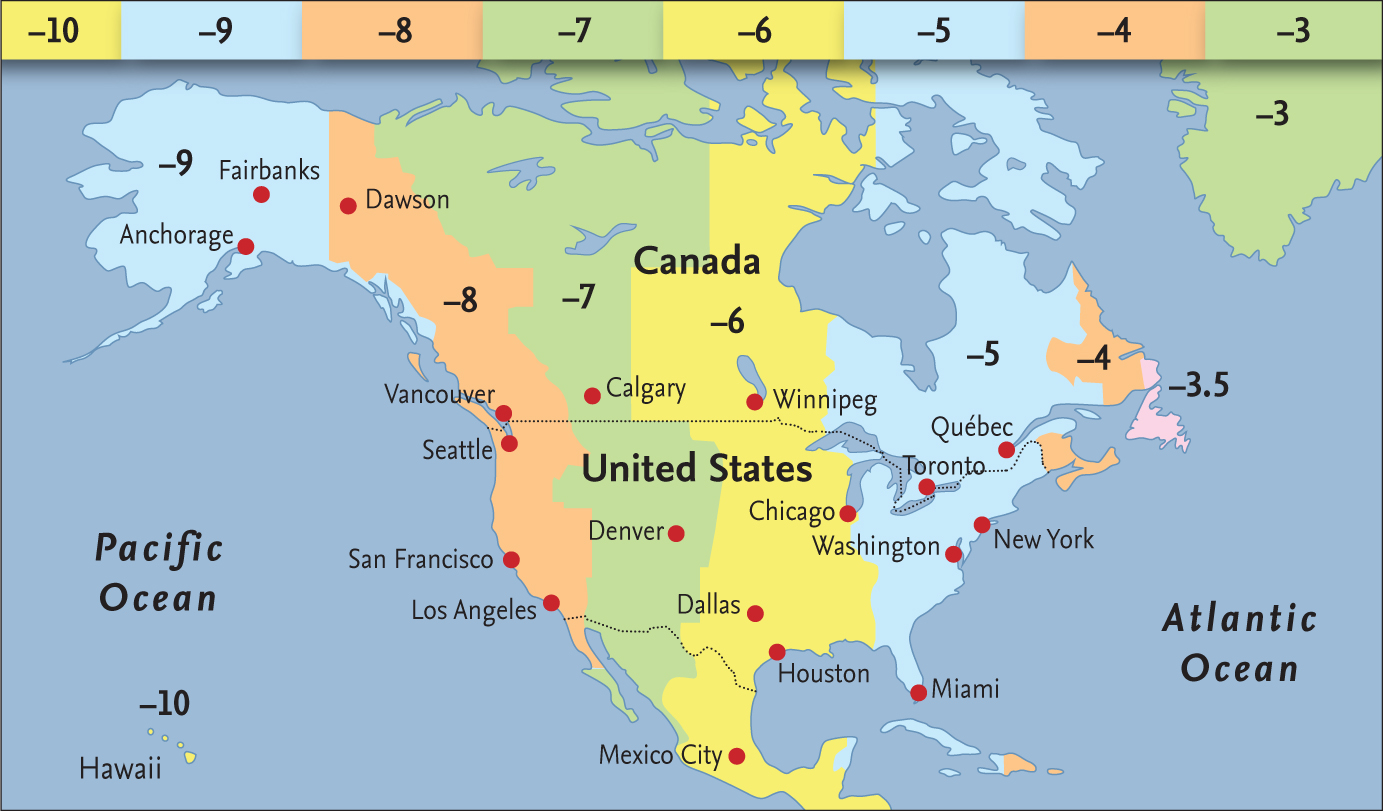
Canada (subtract hours shown from UT) | United States (subtract hours shown from UT) |
Time zone | Winter | Summer | Time zone | Winter | Summer |
Newfoundland | 03:30 (NST) | 02:30 (NDT) | Eastern | 05:00 (EST) | 04:00 (EDT) |
Atlantic | 04:00 (AST) | 03:00 (ADT) | Central | 06:00 (CST) | 05:00 (CDT) |
E. Quebec | 04:00 (AST) | no DST | Mountain | 07:00 (MST) | 06:00 (MDT) |
Eastern | 05:00 (EST) | 04:00 (EDT) | Most of Arizona | 07:00 (MST) | no DST |
Central | 06:00 (CST) | 05:00 (CDT) | Pacific | 08:00 (PST) | 07:00 (PDT) |
Southampton Island | 06:00 (CST) | no DST | Alaska | 09:00 (AKST) | 08:00 (AKDT) |
Mountain | 07:00 (MST) | 06:00 (MDT) | Hawaii-Aleutian | 10:00 (HAST) | no DST |
Saskatchewan | 06:00 (CST) | no DST | Aleutian Islands | 10:00 (HAST) | 09:00 (HADT) |
Pacific | 08:00 (PST) | 07:00 (PDT) |
Yukon | 08:00 (PST) | no DST |
Contents
The aim of this Guide is to help people find their way around the night sky, by showing how the stars that are visible change from month to month and by including details of various events that occur throughout the year. The objects and events described may be observed with the naked eye, or nothing more complicated than a pair of binoculars.
The conditions for observing naturally vary over the course of the year. During the summer, twilight may persist throughout the night and make it difficult to see the faintest stars. There are three recognized stages of twilight: civil twilight, when the Sun is less than 6 below the horizon; nautical twilight, when the Sun is between 6 and 12 below the horizon; and astronomical twilight, when the Sun is between 12 and 18 below the horizon. Full darkness occurs only when the Sun is more than 18 below the horizon. During nautical twilight, only the very brightest stars are visible. During astronomical twilight, the faintest stars visible to the naked eye may be seen directly overhead, but are lost at lower altitudes. As the diagram shows, during most of June full darkness never occurs at the latitude of Vancouver, BC. Slightly farther south (at Seattle, for example) it is truly dark for about two hours, and for somewhere like Houston, TX, there are at least six hours of darkness.
Another factor that affects the visibility of objects is the amount of moonlight in the sky. At Full Moon, it may be very difficult to see some of the fainter stars and objects, and even when the Moon is at a smaller phase it may seriously interfere with visibility if it is near the stars or planets in which you are interested. A full lunar calendar is given for each month and may be used to see when nights are likely to be darkest and best for observation.

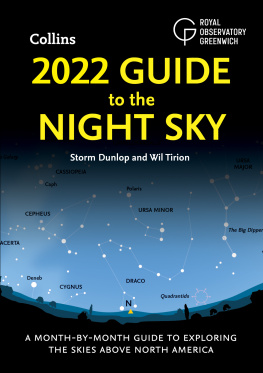


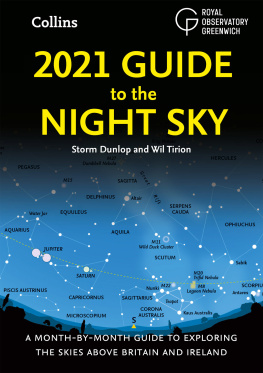
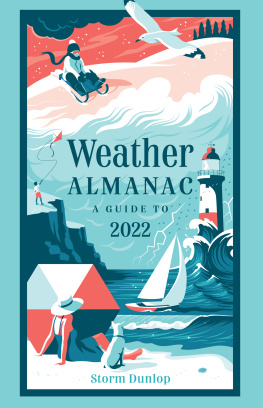
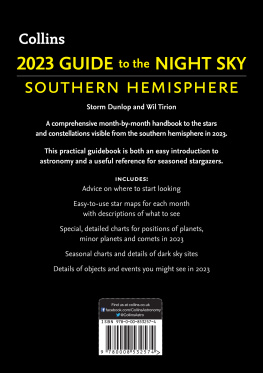
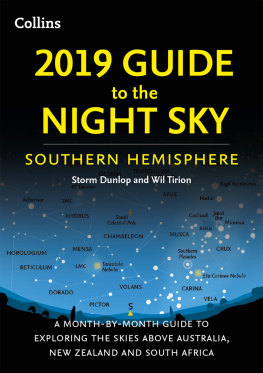


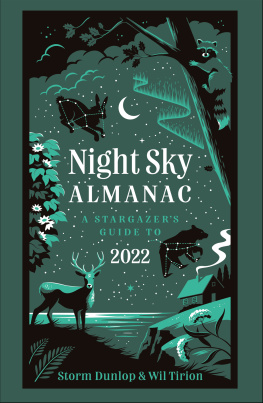
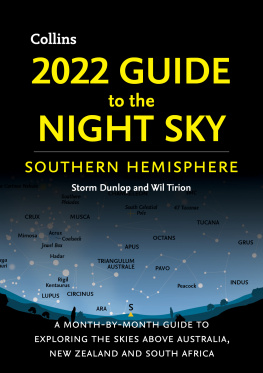


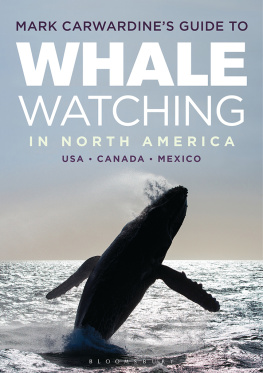


 facebook.com/CollinsAstronomy
facebook.com/CollinsAstronomy @CollinsAstro
@CollinsAstro